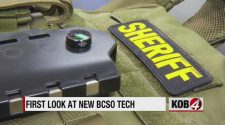EVEN the direst of situations can present a silver lining, or in this case, opportunities to improve the way things have always been done. This ongoing pandemic (and I do hope it ends soon) has hastened the digitization of the nonlife insurance sector. It has opened the eyes of the tradition-bound practitioners and alerted them to doing things faster, better, fairer, more efficiently and at far less cost. This encompasses almost the entire breadth of an insurer’s operations — from the product’s design and development, how it is underwritten, how it is distributed, how claims are adjudicated and processed, and how payments to (premiums) and from (claims) the company are made.
There are various examples I could use for each specific class of business, be it fire, marine, casualty or personal accident, but allow me to zero in on motor car insurance as this is by far the most numerous in terms of policy count and premiums (it accounts for more than half of the industry’s total premium volume).
In the not too recent past all the way to current practice, motor coverages/policies have been bought on an annual basis. They were underwritten (or for the uninitiated, risk-assessed) based on the make, model, age, use and engine displacement of the vehicle. The current pandemic highlighted the issues that this traditional way of underwriting had all along. Due to the lockdown, people were stuck at home and did not have to use their cars to work, go to school, shop, entertain and worship. This brought on the realization that perhaps we did not need insurance on an annual basis. The problem is the current way of underwriting and pricing the product only allowed for an annual cover. There was no impetus to change. As the saying goes, “If it ain’t broke why fix it?” This then brought on the realization for the need of a “pay as you use” type of cover. This was already available in the more progressive countries such as the United States, the United Kingdom and Japan with other countries close on their heels. With the internet, information goes around at warp speed and you cannot keep people from learning about these new developments.
Earlier, I mentioned the basis of underwriting a motor risk, but this in itself needed a revamp. Why base it on the vehicle? Would it not be a better idea to base it on the driver (age, gender, education, profession), or better yet on the way the driver actually operates or uses the vehicle. Is he a jackrabbit accelerator, does he swerve through traffic, overspeed, brakes unevenly or suddenly, or uses roads where there is a high volume of traffic or where a statistically higher number of road accidents occur? These are better and more accurate determinants of the safe usage of a vehicle and it likewise allows one to determine when or where the vehicle is being used. On top of that it allows the insurer to price and charge the coverage on a pay-as-you-use basis!
The technology is already here to make this happen. There is an iteration where a contraption akin to an airplane’s black box is plugged on to the electronics of your car. However, the gadget did cost an amount and, in most cases, voided the warranty of brand-new vehicles. There is another iteration which did not require a gadget to be plugged into your vehicle but just required you to download an app for free into your mobile phones which you had to keep on and on you while you drove. OK, call it creepy as it shared information of your driving habits, places you frequented, present location with the insurer, but on the other hand it affords a whole new way of being insured, not to mention the other positives like security, fleet management, rewards points, safe driving incentives and a host of others.
The timing to introduce this is also right as our insurance regulators have their thumbs to the insuring public’s pulse and have introduced a sandbox regulatory approach to these novel products or ways of doing things. This would mean less stringent (read faster) ways of approving things with the insuring public and, if I may say so, the insurers themselves as both winners in the end.

















